Mining Electric Vehicle Adoption of Users
Abstract
:1. Introduction
2. Literature Review
3. Surveys
3.1. Survey Creation
3.2. Survey Shared Questions
3.3. Survey Unique Questions
- What are the biggest obstacles you face when loading?
- Indicate the degree of satisfaction with the following charging options for Electric Vehicles.
- How do you see the possibility of having a shared charging system in your condominium’s garage with personal consumption accounting (through the condominium account)?
- How much would you be willing to pay to install a charging system that would make your day-to-day easier?
- How much would you be willing to pay for the monthly fee for a charging system that would make your day-to-day easier?
- How do you see the possibility of having a shared charging system in your company’s garage with personal consumption accounting (through the company’s account)?
- How often do you take the following types of trips?
- Do you have an electric vehicle?
- Have you ever driven an electric vehicle?
- What are, in your opinion, the main advantages of a 100% electric vehicle?
- Indicate your degree of agreement on each of the following statements:
- ○
- EVs are quieter than other vehicles.
- ○
- EVs have great acceleration.
- ○
- EVs are environmentally friendly because they produce zero direct emissions.
- ○
- The cost of charging an EV is less than the fuel cost of internal combustion vehicles.
- ○
- EVs cost the same as ICE vehicles.
- ○
- The technology of electric vehicles has improved, and now they have a much longer range.
- ○
- Charging EVs is difficult.
- What is the probability that the next vehicle you buy will be an electric vehicle?
- Please indicate the importance you place on each of the following factors when purchasing an Electric Vehicle:
- ○
- EV environmental benefits
- ○
- EV performance
- ○
- EV looks
- ○
- Number of available charging stations
- ○
- Operating costs
- ○
- Charging costs
- ○
- EV maximum range
- ○
- EV purchase cost
- ○
- Ease of buying a second-hand electric vehicle
- What is the maximum charging time you consider acceptable in an electric vehicle (in hours)?
- How far must an electric vehicle be able to travel on a single charge for you to consider buying one (in kilometers)?
3.4. Surveys Data Cleaning and Merging Process
3.5. Results and Discussion
3.5.1. EV Adoption Obstacles—UVE and DECO Surveys
3.5.2. Potential for Expansion—DECO Survey
4. Conclusions
Contributions
Author Contributions
Funding
Data Availability Statement
Acknowledgments
Conflicts of Interest
References
- Chan, C.C. The state of the art of electric, hybrid, and fuel cell vehicles. Proc. IEEE 2007, 95, 704–718. [Google Scholar] [CrossRef]
- European Comission. European Green Deal. 2021. Available online: https://ec.europa.eu/info/strategy/priorities-2019-2024/european-green-deal_en (accessed on 18 August 2021).
- ”Plano Nacional de Energia e Clima 2021–2030”, Conselho de Ministros. 2019. Available online: https://www.portugalenergia.pt/setor-energetico/bloco-3/ (accessed on 16 August 2021).
- Masson-Delmotte, V.; Zhai, P.; Pirani, A.; Connors, S.L.; Péan, C.; Berger, S.; Caud, N.; Chen, Y.; Goldfarb, L.; Gomis, M.I.; et al. Climate Change 2021: The Physical Science Basis. Contribution of Working Group I to the Sixth Assessment Report of the Intergovernmental Panel on Climate Change; Cambridge University Press: Cambridge, UK, 2021; Available online: https://www.ipcc.ch/report/ar6/wg1/downloads/report/IPCC_AR6_WGI_Full_Report.pdf (accessed on 16 August 2021).
- Page, M.J.; McKenzie, J.E.; Bossuyt, P.M.; Boutron, I.; Hoffmann, T.C.; Mulrow, C.D.; Shamseer, L.; Tetzlaff, J.M.; Akl, E.A.; Brennan, S.E.; et al. The PRISMA 2020 statement: An updated guideline for reporting systematic reviews. BMJ 2021, 372, 9. [Google Scholar] [CrossRef]
- Zhang, X.; Peng, H.; Wang, H.; Ouyang, M. Hybrid Lithium Iron Phosphate Battery and Lithium Titanate Battery Systems for Electric Buses. IEEE Trans. Veh. Technol. 2018, 67, 956–965. [Google Scholar] [CrossRef]
- Mendeley. Available online: https://www.mendeley.com/search/ (accessed on 22 May 2021).
- Waltman, L.; van Eck, N.J. VOSviewer—Visualizing Scientific Landscapes. Available online: https://www.vosviewer.com/ (accessed on 18 July 2021).
- Bouchhima, N.; Gossen, M.; Schulte, S.; Birke, K.P. Lifetime of self-reconfigurable batteries compared with conventional batteries. J. Energy Storage 2018, 15, 400–407. [Google Scholar] [CrossRef]
- Caliwag, A.C.; Lim, W. Hybrid VARMA and LSTM Method for Lithium-ion Battery State-of-Charge and Output Voltage Forecasting in Electric Motorcycle Applications. IEEE Access 2019, 7, 59680–59689. [Google Scholar] [CrossRef]
- Ceng, M.S.; Reddy, K.J. Predicting Life-Cycle Estimation of Electric Vehicle Battery Pack through Degradation by Self Discharge and Fast Charging. In SAE Technical Report; SAE: Warrendale, PA, USA, 2020. [Google Scholar] [CrossRef]
- Chen, Z.; Xue, Q.; Xiao, R.; Liu, Y.; Shen, J. State of Health Estimation for Lithium-ion Batteries Based on Fusion of Autoregressive Moving Average Model and Elman Neural Network. IEEE Access 2019, 7, 102662–102678. [Google Scholar] [CrossRef]
- Crawford, A.J.; Huang, Q.; Kintner-Meyer, M.C.; Zhang, J.-G.; Reed, D.M.; Sprenkle, V.L.; Viswanathan, V.V.; Choi, D. Lifecycle comparison of selected Li-ion battery chemistries under grid and electric vehicle duty cycle combinations. J. Power Sources 2018, 380, 185–193. [Google Scholar] [CrossRef]
- Cui, X.; Hu, T. State of Health Diagnosis and Remaining Useful Life Prediction for Lithium-ion Battery Based on Data Model Fusion Method. IEEE Access 2020, 8, 207298–207307. [Google Scholar] [CrossRef]
- Dong, G.; Chen, Z.; Wei, J.; Ling, Q. Battery health prognosis using brownian motion modeling and particle filtering. IEEE Trans. Ind. Electron. 2018, 65, 8646–8655. [Google Scholar] [CrossRef]
- Feng, X.; Weng, C.; He, X.; Han, X.; Lu, L.; Ren, D.; Ouyang, M. Online State-of-Health Estimation for Li-Ion Battery Using Partial Charging Segment Based on Support Vector Machine. IEEE Trans. Veh. Technol. 2019, 68, 8583–8592. [Google Scholar] [CrossRef]
- Hu, X.S.; Yuan, H.; Zou, C.F.; Li, Z.; Zhang, L. Co-Estimation of State of Charge and State of Health for Lithium-Ion Batteries Based on Fractional-Order Calculus. IEEE Trans. Veh. Technol. 2018, 67, 10319–10329. [Google Scholar] [CrossRef]
- Hu, X.; Martinez, C.M.; Yang, Y. Charging, power management, and battery degradation mitigation in plug-in hybrid electric vehicles: A unified cost-optimal approach. Mech. Syst. Signal Process. 2017, 87, 4–16. [Google Scholar] [CrossRef]
- Hu, X.S.; Feng, F.; Liu, K.L.; Zhang, L.; Xie, J.L.; Liu, B. State estimation for advanced battery management: Key challenges and future trends. Renew. Sustain. Energy Rev. 2019, 114, 109334. [Google Scholar] [CrossRef]
- Huo, Q.; Ma, Z.; Zhao, X.; Zhang, T.; Zhang, Y. Bayesian Network-Based State-of-Health Estimation for Battery on Electric Vehicle Application and its Validation through Real-World Data. IEEE Access 2021, 9, 11328–11341. [Google Scholar] [CrossRef]
- Jiang, Y.; Zhang, J.; Xia, L.; Liu, Y. State of Health Estimation for Lithium-Ion Battery Using Empirical Degradation and Error Compensation Models. IEEE Access 2020, 8, 123858–123868. [Google Scholar] [CrossRef]
- Khan, N.; Ullah, F.U.M.; Afnan; Ullah, A.; Lee, M.Y.; Baik, S.W. Batteries State of Health Estimation via Efficient Neural Networks with Multiple Channel Charging Profiles. IEEE Access 2021, 9, 7797–7813. [Google Scholar] [CrossRef]
- Kim, J.; Chun, H.; Kim, M.; Yu, J.; Kim, K.; Kim, T.; Han, S. Data-Driven State of Health Estimation of Li-Ion Batteries with RPT-Reduced Experimental Data. IEEE Access 2019, 7, 106987–106997. [Google Scholar] [CrossRef]
- Kim, M.; Kim, K.; Han, S. Reliable Online Parameter Identification of Li-Ion Batteries in Battery Management Systems Using the Condition Number of the Error Covariance Matrix. IEEE Access 2020, 8, 189106–189114. [Google Scholar] [CrossRef]
- Li, K.; Wei, F.; Tseng, K.J.; Soong, B.-H. A Practical Lithium-Ion Battery Model for State of Energy and Voltage Responses Prediction Incorporating Temperature and Ageing Effects. IEEE Trans. Ind. Electron. 2018, 65, 6696–6708. [Google Scholar] [CrossRef]
- Li, X.Y.; Wang, Z.P.; Zhang, L.; Zou, C.F.; Dorrell, D.D. State-of-health estimation for Li-ion batteries by combing the incremental capacity analysis method with grey relational analysis. J. Power Sources 2019, 410, 106–114. [Google Scholar] [CrossRef]
- Li, Y.; Zhong, S.; Zhong, Q.; Shi, K. Lithium-Ion Battery State of Health Monitoring Based on Ensemble Learning. IEEE Access 2019, 7, 8754–8762. [Google Scholar] [CrossRef]
- Lipu, M.S.H.; Hannan, M.A.; Hussain, A.; Saad, M.H.M. Optimal BP neural network algorithm for state of charge estimation of lithium-ion battery using PSO with PCA feature selection. J. Renew. Sustain. Energy 2017, 9, 064102. [Google Scholar] [CrossRef]
- Lipu, M.S.H.; Hannan, M.; Hussain, A.; Hoque, M.; Ker, P.J.; Saad, M.; Ayob, A. A review of state of health and remaining useful life estimation methods for lithium-ion battery in electric vehicles: Challenges and recommendations. J. Clean. Prod. 2018, 205, 115–133. [Google Scholar] [CrossRef]
- Liu, D.; Yin, X.; Song, Y.; Liu, W.; Peng, Y. An On-Line State of Health Estimation of Lithium-Ion Battery Using Unscented Particle Filter. IEEE Access 2018, 6, 40990–41001. [Google Scholar] [CrossRef]
- Liu, K.; Hu, X.; Wei, Z.; Li, Y.; Jiang, Y. Modified Gaussian Process Regression Models for Cyclic Capacity Prediction of Lithium-Ion Batteries. IEEE Trans. Transp. Electrif. 2019, 5, 1225–1236. [Google Scholar] [CrossRef]
- Ma, Y.; Chen, Y.; Zhou, X.W.; Chen, H. Remaining Useful Life Prediction of Lithium-Ion Battery Based on Gauss-Hermite Particle Filter. IEEE Trans. Control Syst. Technol. 2019, 27, 1788–1795. [Google Scholar] [CrossRef]
- May, G.; El-Shahat, A. Battery-degradation model based on the ANN regression function for EV applications. In Proceedings of the GHTC 2017—IEEE Global Humanitarian Technology Conference, Proceedings, San Jose, CA, USA, 19–22 October 2017; pp. 1–3. [Google Scholar] [CrossRef]
- El Mejdoubi, A.; Chaoui, H.; Gualous, H.; van den Bossche, P.; Omar, N.; van Mierlo, J. Lithium-ion batteries health prognosis considering aging conditions. IEEE Trans. Power Electron. 2019, 34, 6834–6844. [Google Scholar] [CrossRef]
- Moye, D.G.; Moss, P.L.; Chen, X.J.; Cao, W.J.; Foo, S.Y. A design-based predictive model for lithium-ion capacitors. J. Power Sources 2019, 435, 226694. [Google Scholar] [CrossRef]
- Qu, J.; Liu, F.; Ma, Y.; Fan, J. A Neural-Network-Based Method for RUL Prediction and SoH Monitoring of Lithium-Ion Battery. IEEE Access 2019, 7, 87178–87191. [Google Scholar] [CrossRef]
- Saldaña, G.; Martín, J.I.S.; Zamora, I.; Asensio, F.J.; Oñederra, O.; González, M. Empirical Electrical and Degradation Model for Electric Vehicle Batteries. IEEE Access 2020, 8, 155576–155589. [Google Scholar] [CrossRef]
- Shen, P.; Ouyang, M.G.; Lu, L.G.; Li, J.Q.; Feng, X.N. The Co-estimation of State of Charge, State of Health, and State of Function for Lithium-Ion Batteries in Electric Vehicles. IEEE Trans. Veh. Technol. 2018, 67, 92–103. [Google Scholar] [CrossRef]
- Tan, X.; Tan, Y.; Zhan, D.; Yu, Z.; Fan, Y.; Qiu, J.; Li, J. Real-Time State-of-Health Estimation of Lithium-Ion Batteries Based on the Equivalent Internal Resistance. IEEE Access 2020, 8, 56811–56822. [Google Scholar] [CrossRef]
- Tang, J.; Liu, Q.; Liu, S.; Xie, X.; Zhou, J.; Li, Z. A Health Monitoring Method Based on Multiple Indicators to Eliminate Influences of Estimation Dispersion for Lithium-Ion Batteries. IEEE Access 2019, 7, 122302–122314. [Google Scholar] [CrossRef]
- Tian, J.P.; Xiong, R.; Yu, Q.Q. Fractional-Order Model-Based Incremental Capacity Analysis for Degradation State Recognition of Lithium-Ion Batteries. IEEE Trans. Ind. Electron. 2019, 66, 1576–1584. [Google Scholar] [CrossRef]
- Vidal, C.; Malysz, P.; Kollmeyer, P.; Emadi, A. Machine Learning Applied to Electrified Vehicle Battery State of Charge and State of Health Estimation: State-of-the-Art. IEEE Access 2020, 8, 52796–52814. [Google Scholar] [CrossRef]
- Wang, Z.; Ma, J.; Zhang, L. State-of-Health Estimation for Lithium-Ion Batteries Based on the Multi-Island Genetic Algorithm and the Gaussian Process Regression. IEEE Access 2017, 5, 21286–21295. [Google Scholar] [CrossRef]
- Wei, J.W.; Dong, G.Z.; Chen, Z.H. Remaining Useful Life Prediction and State of Health Diagnosis for Lithium-Ion Batteries Using Particle Filter and Support Vector Regression. IEEE Trans. Ind. Electron. 2018, 65, 5634–5643. [Google Scholar] [CrossRef]
- Wu, Y.; Xue, Q.; Shen, J.; Lei, Z.; Chen, Z.; Liu, Y. State of Health Estimation for Lithium-Ion Batteries Based on Healthy Features and Long Short-Term Memory. IEEE Access 2020, 8, 28533–28547. [Google Scholar] [CrossRef]
- Xiang, M.; He, Y.; Zhang, H.; Zhang, C.; Wang, L.; Wang, C.; Sui, C. State-of-Health Prognosis for Lithium-Ion Batteries Considering the Limitations in Measurements via Maximal Information Entropy and Collective Sparse Variational Gaussian Process. IEEE Access 2020, 8, 188199–188217. [Google Scholar] [CrossRef]
- Xu, X.; Yu, C.; Tang, S.; Sun, X.; Si, X.; Wu, L. State-of-Health Estimation for Lithium-Ion Batteries Based on Wiener Process with Modeling the Relaxation Effect. IEEE Access 2019, 7, 105186–105201. [Google Scholar] [CrossRef]
- Yao, H.; Jia, X.; Zhao, Q.; Cheng, Z.; Guo, B. Novel Lithium-Ion Battery State-of-Health Estimation Method Using a Genetic Programming Model. IEEE Access 2020, 8, 95333–95344. [Google Scholar] [CrossRef]
- Yun, Z.; Qin, W. Remaining Useful Life Estimation of Lithium-Ion Batteries Based on Optimal Time Series Health Indicator. IEEE Access 2020, 8, 55447–55461. [Google Scholar] [CrossRef]
- Zhang, C.; He, Y.; Yuan, L.; Xiang, S. Capacity Prognostics of Lithium-Ion Batteries using EMD Denoising and Multiple Kernel RVM. IEEE Access 2017, 5, 12061–12070. [Google Scholar] [CrossRef]
- Zhang, L.; Mu, Z.; Sun, C. Remaining Useful Life Prediction for Lithium-Ion Batteries Based on Exponential Model and Particle Filter. IEEE Access 2018, 6, 17729–17740. [Google Scholar] [CrossRef]
- Zhang, Y.; Xiong, R.; He, H.; Pecht, M.G. Lithium-Ion Battery Remaining Useful Life Prediction with Box-Cox Transformation and Monte Carlo Simulation. IEEE Trans. Ind. Electron. 2019, 66, 1585–1597. [Google Scholar] [CrossRef]
- Zheng, X.; Deng, X. State-of-Health Prediction For Lithium-Ion Batteries with Multiple Gaussian Process Regression Model. IEEE Access 2019, 7, 150383–150394. [Google Scholar] [CrossRef]
- Zhou, D.; Li, Z.; Zhu, J.; Zhang, H.; Hou, L. State of Health Monitoring and Remaining Useful Life Prediction of Lithium-Ion Batteries Based on Temporal Convolutional Network. IEEE Access 2020, 8, 53307–53320. [Google Scholar] [CrossRef]
- Scimago Journal & Country Rank. Available online: https://www.scimagojr.com/ (accessed on 20 October 2021).
- Croce, A.I.; Musolino, G.; Rindone, C.; Vitetta, A. Energy consumption of electric vehicles: Models’ estimation using big data (FCD). Transp. Res. Procedia 2020, 47, 211–218. [Google Scholar] [CrossRef]
- Fiori, C.; Marzano, V. Modelling energy consumption of electric freight vehicles in urban pickup/delivery operations: Analysis and estimation on a real-world dataset. Transp. Res. Part D Transp. Environ. 2018, 65, 658–673. [Google Scholar] [CrossRef]
- Musolino, G.; Rindone, C.; Vitetta, A. Passengers and freight mobility with electric vehicles: A methodology to plan green transport and logistic services near port areas. Transp. Res. Procedia 2019, 37, 393–400. [Google Scholar] [CrossRef]
- Qualtrics XM//The Leading Experience Management Software. Available online: https://www.qualtrics.com/uk/ (accessed on 1 September 2021).
- General Data Protection Regulation (GDPR)—Official Legal Text. Available online: https://gdpr-info.eu/ (accessed on 19 August 2021).
- UVE—Associação de Utilizadores de Veículos Eléctricos. Available online: https://www.uve.pt/page/ (accessed on 19 August 2021).
- r/TeslaMotors—Your Tesla Community on Reddit. Available online: https://www.reddit.com/r/teslamotors/ (accessed on 1 September 2021).
- r/TeslaLounge—Your Relaxed Tesla Community on Reddit. Available online: https://www.reddit.com/r/TeslaLounge/ (accessed on 1 September 2021).
- Defesa do Consumidor | DECO PROTESTE. Available online: https://www.deco.proteste.pt/ (accessed on 1 September 2021).
- Como Carregar um Veículo Elétrico—UVE. Available online: https://www.uve.pt/page/como-carregar-um-veiculo-eletrico/ (accessed on 7 June 2021).
- Du, J.; Zhang, X.; Wang, T.; Song, Z.; Yang, X.; Wang, H.; Ouyang, M.; Wu, X. Battery degradation minimization oriented energy management strategy for plug-in hybrid electric bus with multi-energy storage system. Energy 2018, 165, 153–163. [Google Scholar] [CrossRef]
- Cui, Q.; Du, S.; Liu, C.; Zhang, L.; Wei, G. A stochastic optimal energy management strategy considering battery health for hybrid electric bus. Proc. Inst. Mech. Eng. Part D J. Automob. Eng. 2020, 234, 3112–3127. [Google Scholar] [CrossRef]
- Qiao, H.; Wei, Q. Functional nanofibers in lithium-ion batteries. In Functional Nanofibers and Their Applications; Woodhead Publishing: Sawston, UK, 2012; pp. 197–208. [Google Scholar] [CrossRef]
- Tang, X.; Liu, K.; Wang, X.; Gao, F.; MacRo, J.; Widanage, W.D. Model Migration Neural Network for Predicting Battery Aging Trajectories. IEEE Trans. Transp. Electrif. 2020, 6, 363–374. [Google Scholar] [CrossRef]
- Wu, X.; Li, X.; Du, J. State of Charge Estimation of Lithium-Ion Batteries over Wide Temperature Range Using Unscented Kalman Filter. IEEE Access 2018, 6, 41993–42003. [Google Scholar] [CrossRef]
- Rede Mobi.e—Mobi.e. Available online: https://www.mobie.pt/ (accessed on 28 August 2021).
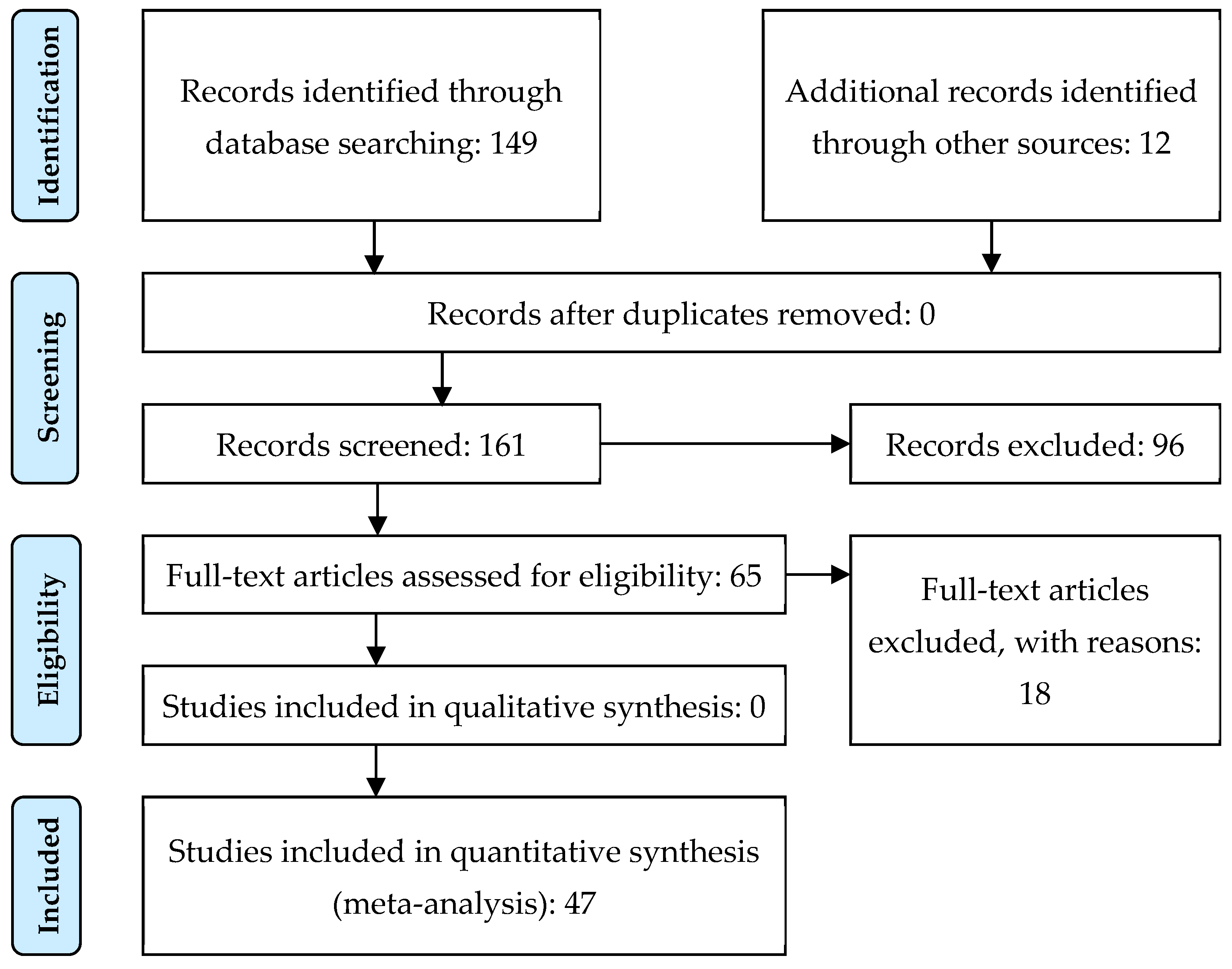
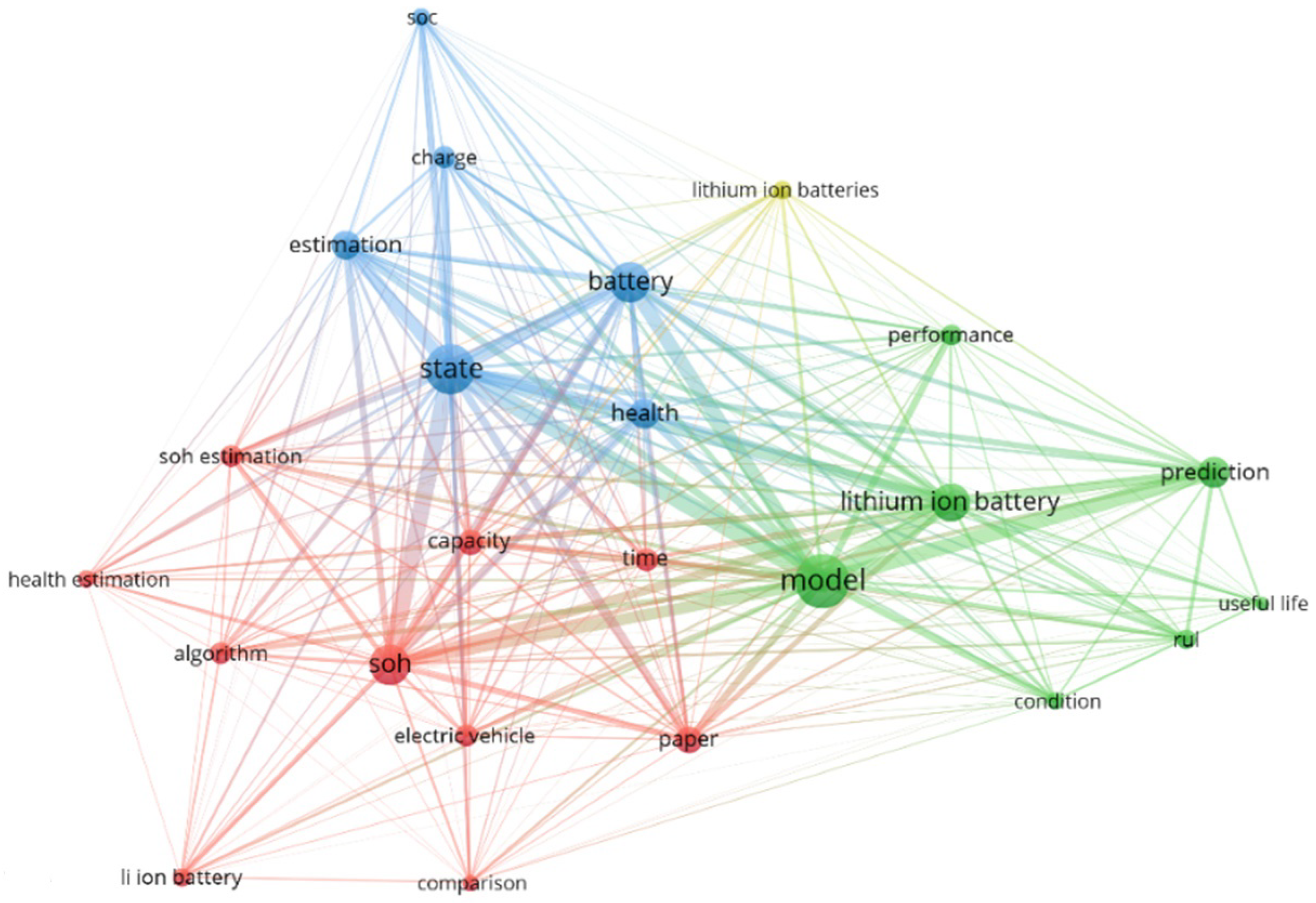
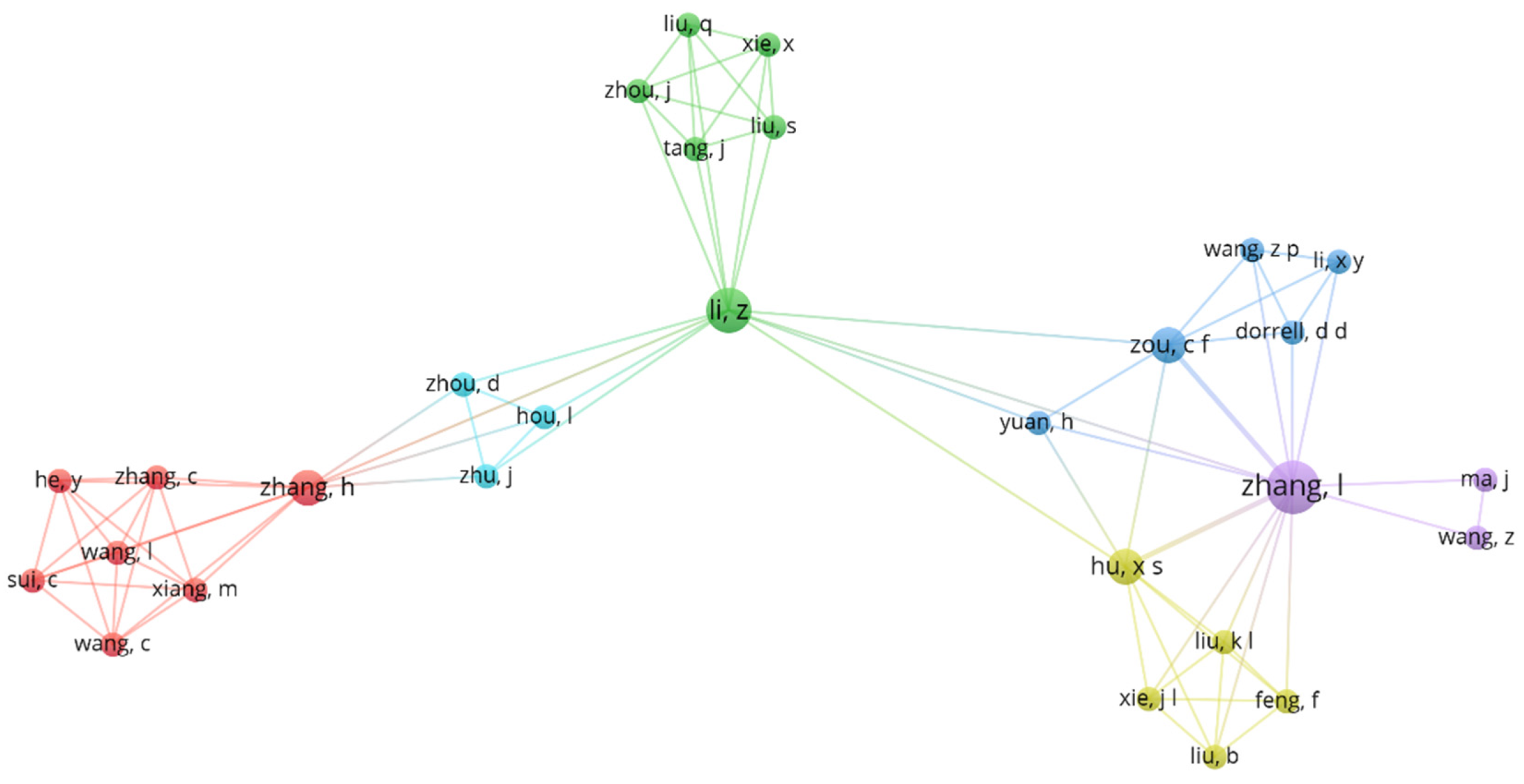

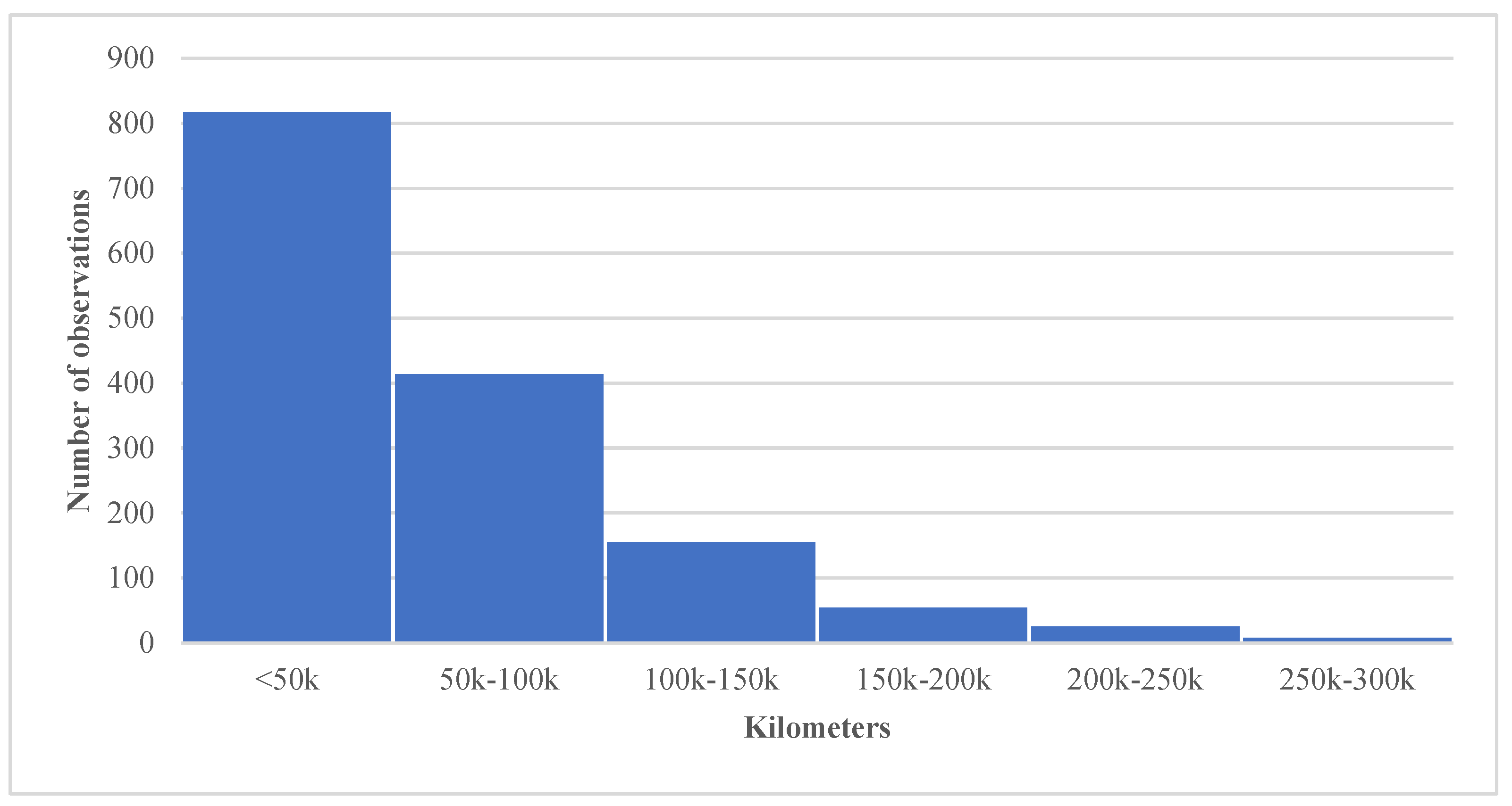
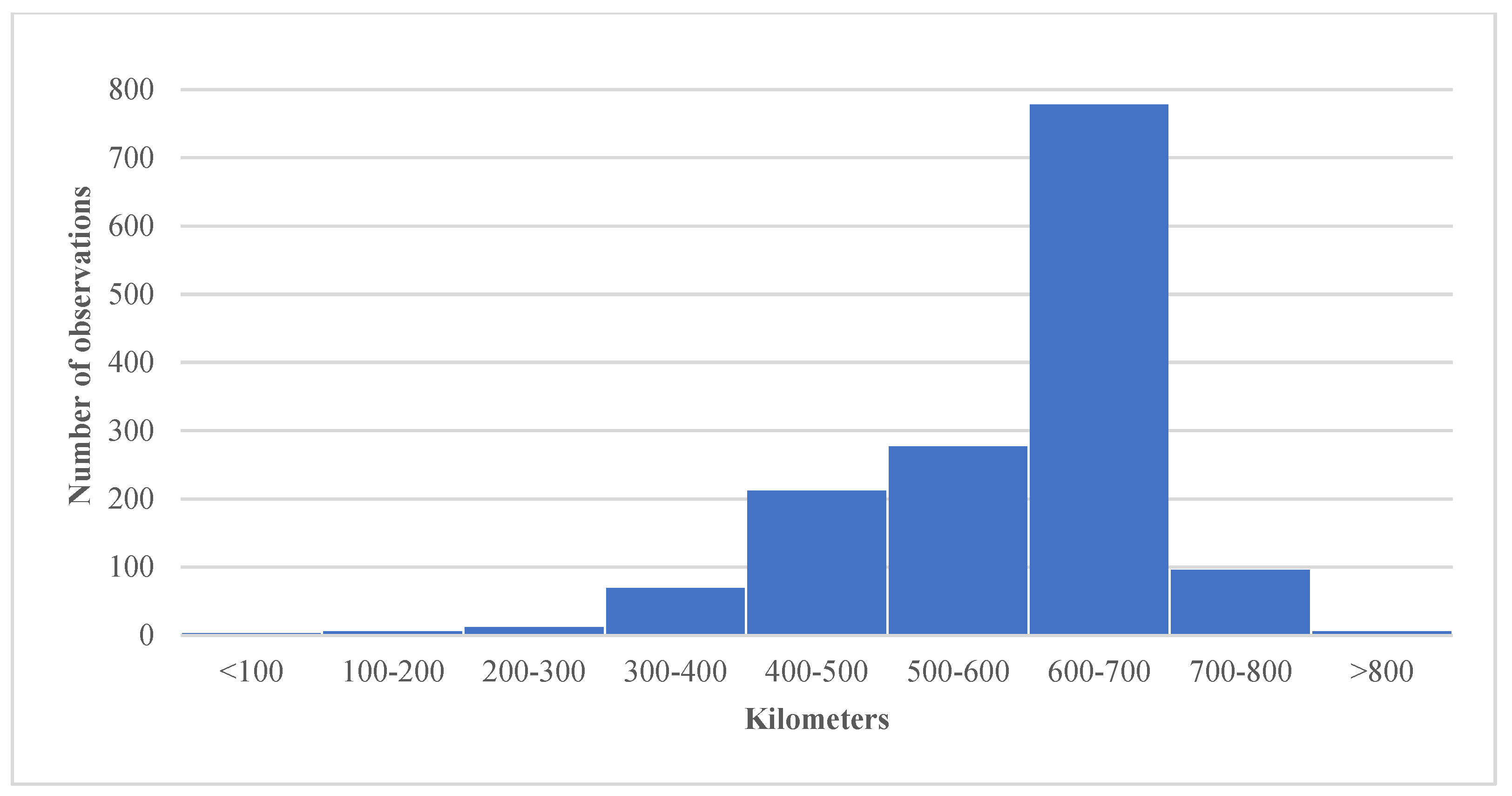

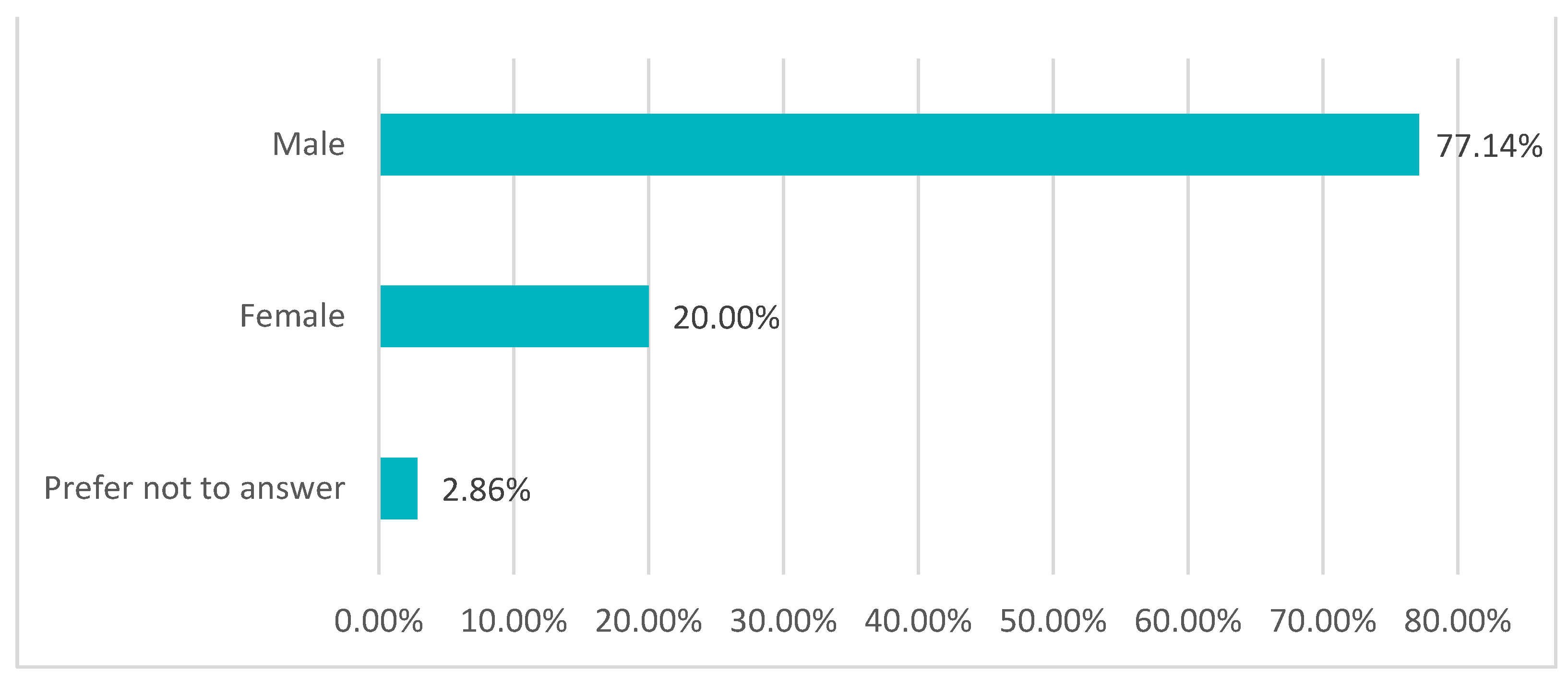



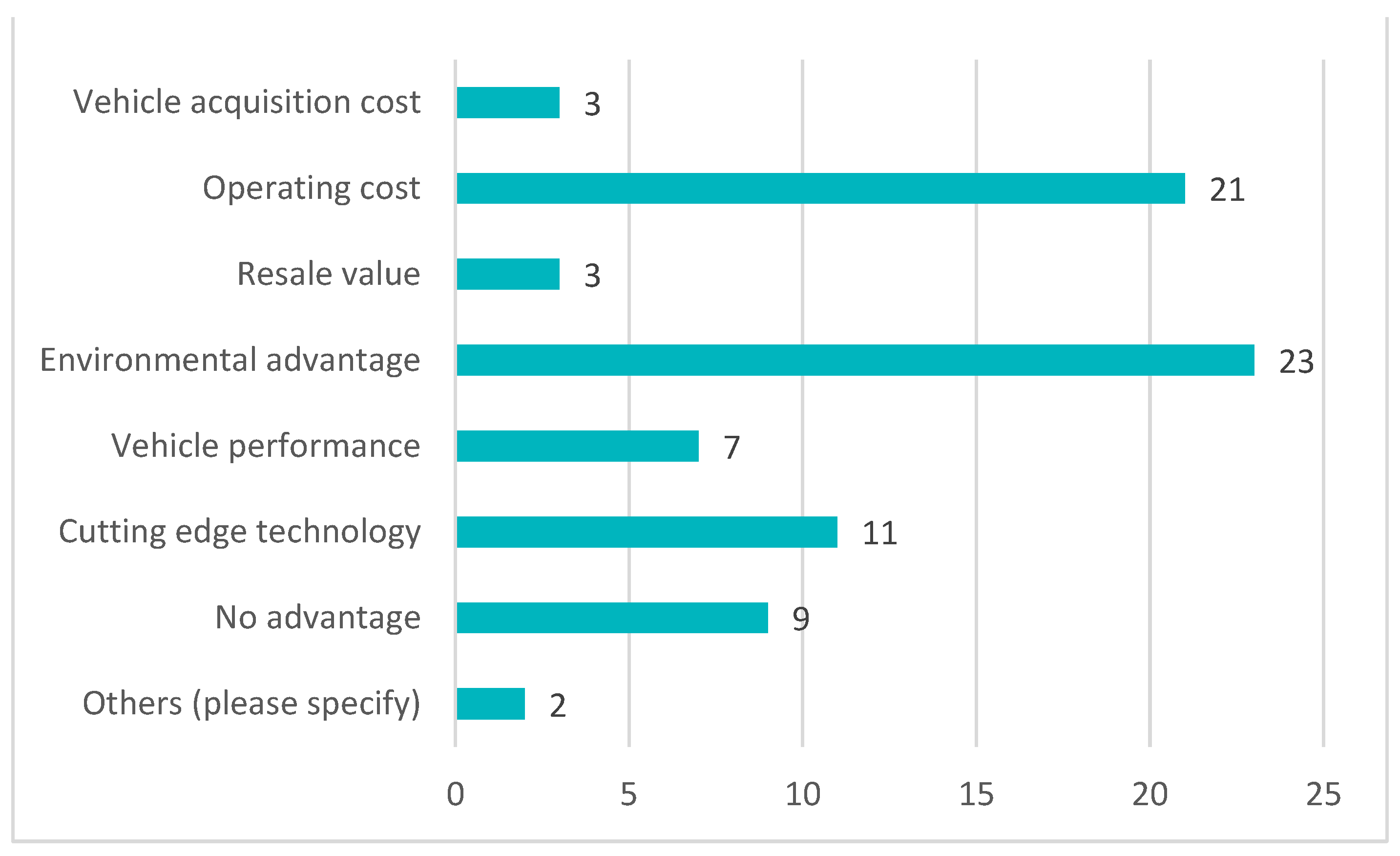

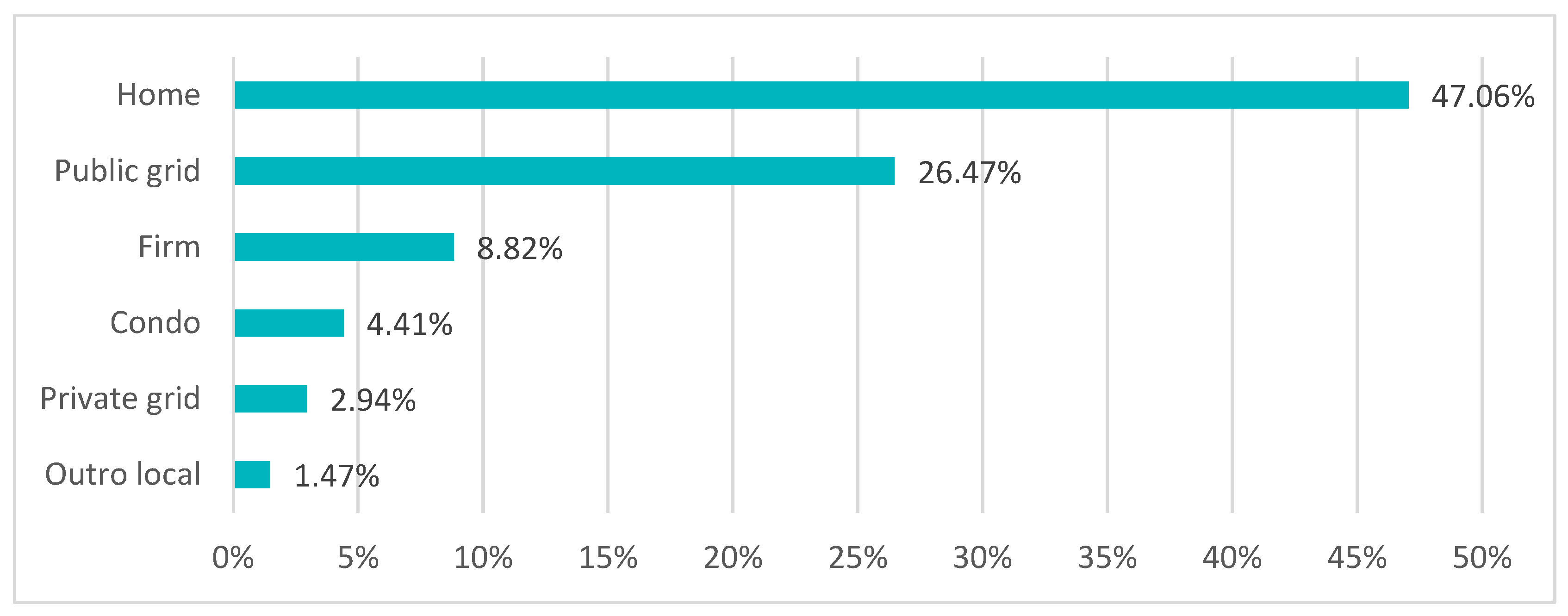




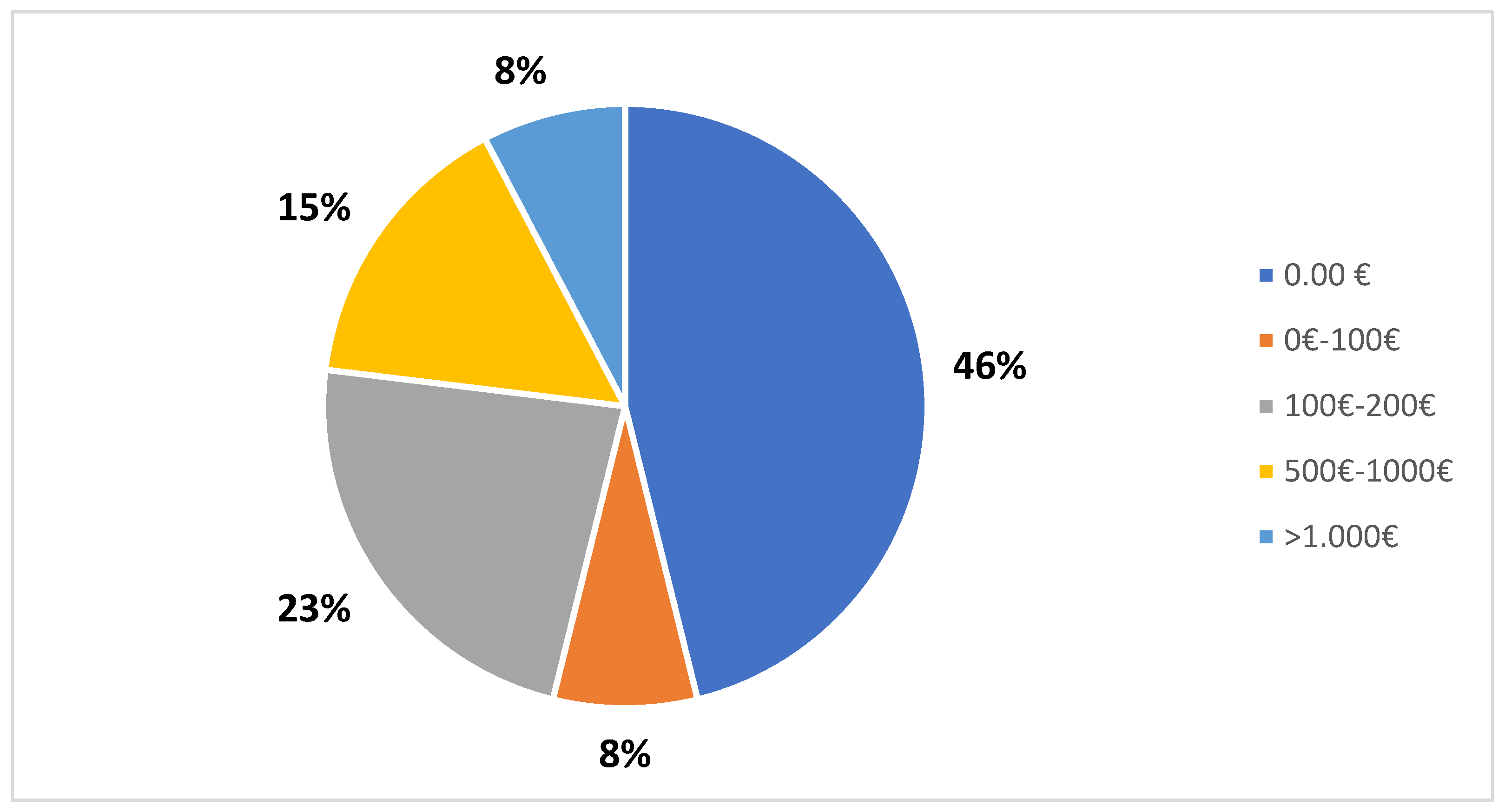
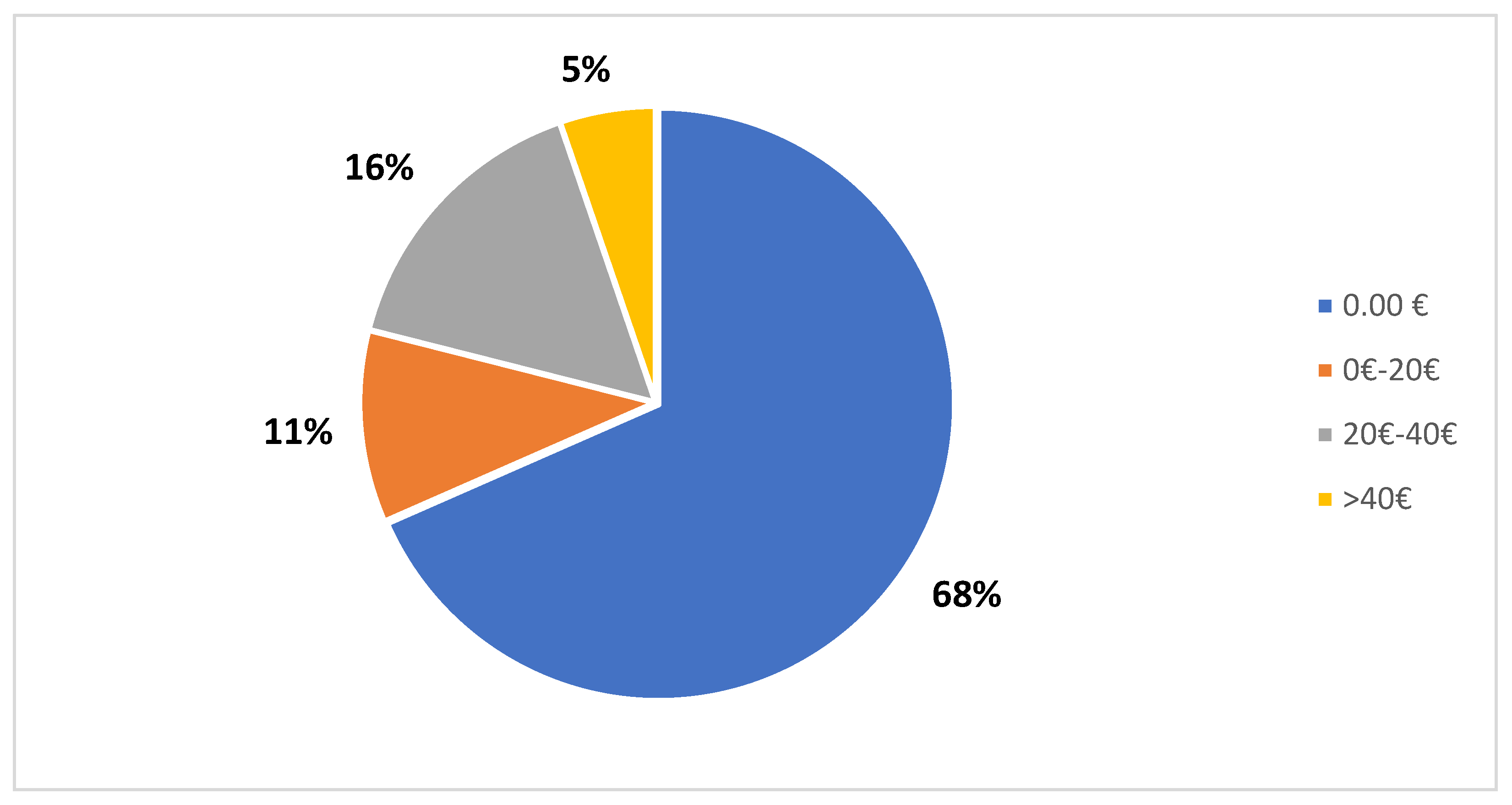
| Research Question | Objective | Methodology |
|---|---|---|
| RQ—Which factors may present themselves as a hindrance to the adoption of EV vehicles by citizens? | OBJ—To identify and understand user satisfaction and how that may hinder the adoption of electric vehicles. | Descriptive Statistics and Content Analysis |
| Title | Author | Method |
|---|---|---|
| Lifetime of Self-Reconfigurable Batteries Compared with Conventional Batteries [9] | Bouchhima, N., Gossen, M., Schulte, S., Birke, K.P. | Semi-empirical aging model. |
| Hybrid VARMA and LSTM Method for Lithium-Ion Battery State-of-Charge and Output Voltage Forecasting in Electric Motorcycle Applications [10] | Caliwag, A.-C., Lim, W. | Neural Networking State of Charge (SoC) prediction method. |
| Predicting Life-Cycle Estimation of Electric Vehicle Battery Pack through Degradation by Self Discharge and Fast Charging [11] | Singh Ceng, M., Janardhan Reddy, K. | Battery pack SoC estimation of self-discharge simulation. |
| SoH Estimation for Lithium-Ion Batteries Based on Fusion of Autoregressive Moving Average Model and Elman Neural Network [12] | Chen, Z., Xue, Q., Xiao, R., Liu, Y., Shen, J. | Neural Network prediction method. |
| Lifecycle Comparison of Selected Li-Ion Battery Chemistries under Grid and Electric Vehicle Duty Cycle Combinations [13] | Crawford, A.J., Huang, Q., Kintner-Meyer, M.C.W., Zhang, J.-G., Reed, D.M., Sprenkle, V.L., Viswanathan, V.V., Choi, D. | Neural Network State of Energy prediction method. |
| SoH Diagnosis and RUL Prediction for Lithium-Ion Battery Based on Data Model Fusion Method [14] | Cui, X., Hu, T. | Neural Network prediction method. |
| Battery Health Prognosis Using Brownian Motion Modeling and Particle Filtering [15] | Dong, G., Chen, Z., Wei, J., Ling, Q. | Particle Filtering prediction model. |
| Online State-of-Health Estimation for Li-Ion Battery Using Partial Charging Segment Based on Support Vector Machine [16] | Feng, X., Weng, C., He, X., Han, X., Lu, L., Ren, D., Ouyang, M. | SoH and SVM prediction model. |
| Co-Estimation of SoC and the SoH for Lithium-Ion Batteries Based on Fractional-Order Calculus [17] | Hu, X.S., Yuan, H., Zou, C F., Li, Z., Zhang, L. | SoC and SoH estimation model. |
| Charging, Power Management, and Battery Degradation Mitigation in Plug-in Hybrid Electric Vehicles: A Unified Cost-Optimal Approach [18] | Hu, X., Martinez, C.M., Yang, Y. | Battery Management System (BMS) estimation model. |
| State Estimation for Advanced Battery Management: Key Challenges and Future Trends [19] | Hu, X.S., Feng, F., Liu, K.L., Zhang, L., Xie, J.L., Liu, B. | BMS estimation model. |
| Bayesian Network-Based State-of-Health Estimation for Battery on Electric Vehicle Application and Its Validation Through Real-World Data [20] | Huo, Q., Ma, Z., Zhao, X., Zhang, T., Zhang, Y. | Bayesian Network SoH estimation model. |
| SoH Estimation for Lithium-Ion Battery Using Empirical Degradation and Error Compensation Models [21] | Jiang, Y., Zhang, J., Xia, L., Liu, Y. | SoH predictive model. |
| Batteries SoH Estimation via Efficient Neural Networks with Multiple Channel Charging Profiles [22] | Khan, N., Ullah, F.U.M., Afnan, Ullah, A., Lee, M.Y., Baik, S.W. | SoH Neural Network prediction model. |
| Data-Driven SoH Estimation of Li-Ion Batteries with RPT-Reduced Experimental Data [23] | Kim, J., Chun, H., Kim, M., Yu, J., Kim, K., Kim, T., Han, S. | SoH prediction model. |
| Reliable Online Parameter Identification of Li-Ion Batteries in Battery Management Systems Using the Condition Number of the Error Covariance Matrix [24] | Kim, M., Kim, K., Han, S. | SoH prediction model. |
| A Practical Lithium-Ion Battery Model for the State of Energy and Voltage Responses Prediction Incorporating Temperature and Ageing Effects [25] | Li, K., Wei, F., Tseng, K.J., Soong, B.H. | SoE predictive model. |
| State-of-Health Estimation for Li-Ion Batteries by Combing the Incremental Capacity Analysis Method with Grey Relational Analysis [26] | Li, X.Y., Wang, Z.P., Zhang, L., Zou, C.F., Dorrell, D.D. | SoH and RUL predictive model. |
| Lithium-Ion Battery SoH Monitoring Based on Ensemble Learning [27] | Li, Y., Zhong, S., Zhong, Q., Shi, K. | Grey Relational Analysis model. |
| Optimal BP Neural Network Algorithm for SoC Estimation of Lithium-Ion Battery Using PSO with PCA Feature Selection [28] | Hossain Lipu, M.S., Hannan, M.A., Hussain, A., Saad, M.H.M. | SoC estimation Back-Propagation Neural Network model. |
| A Review of SoH and RUL Estimation Methods for Lithium-Ion Battery in Electric Vehicles: Challenges and Recommendations [29] | Lipu, M.S.H., Hannan, M.A., Hussain, A., Hoque, M.M., Ker, P.J., Saad, M.H.M., Ayob, A. | SoH prediction model. |
| An On-Line SoH Estimation of Lithium-Ion Battery Using Unscented Particle Filter [30] | Liu, D., Yin, X., Song, Y., Liu, W., Peng, Y. | Neural Networking SoH prediction model. |
| Modified Gaussian Process Regression Models for Cyclic Capacity Prediction of Lithium-Ion Batteries [31] | Liu, K., Hu, X., Wei, Z., Li, Y., Jiang, Y. | Gaussian Process Regression model. |
| RUL Prediction of Lithium-Ion Battery Based on Gauss-Hermite Particle Filter [32] | Ma, Y., Chen, Y., Zhou, X W., Chen, H. | RUL and SoH prediction model. |
| Battery-Degradation Model Based on the ANN Regression Function for EV Applications [33] | May, G., El-Shahat, A. | Neural Network-based prediction model. |
| Lithium-Ion Batteries Health Prognosis Considering Aging Conditions [34] | El Mejdoubi, A., Chaoui, H., Gualous, H., Van Den Bossche, P., Omar, N., Van Mierlo, J. | RUL predictive model. |
| A Design-Based Predictive Model for Lithium-Ion Capacitors [35] | Moye, D.G., Moss, P.L., Chen, X.J., Cao, W.J., Foo, S.Y. | A predictive model of Capacitors. |
| A Neural-Network-Based Method for RUL Prediction and SoH Monitoring of Lithium-Ion Battery [36] | Qu, J., Liu, F., Ma, Y., Fan, J. | Neural Network-based model. |
| Empirical Electrical and Degradation Model for Electric Vehicle Batteries [37] | Saldaña, G., Martín, J.I.S., Zamora, I., Asensio, F.J., Oñederra, O., González, M. | Degradation model based on actual LG battery cell. |
| The Co-Estimation of SoC, SoH, and State of Function for Lithium-Ion Batteries in Electric Vehicles [38] | Shen, P., Ouyang, M.G., Lu, L.G., Li, J.Q., Feng, X.N. | SoH predictive model. |
| Real-Time State-of-Health Estimation of Lithium-Ion Batteries Based on the Equivalent Internal Resistance [39] | Tan, X., Tan, Y., Zhan, D., Yu, Z., Fan, Y., Qiu, J., Li, J. | SoH and SoC predictive model. |
| A Health Monitoring Method Based on Multiple Indicators to Eliminate Influences of Estimation Dispersion for Lithium-Ion Batteries [40] | Tang, J., Liu, Q., Liu, S.,Xie, X., Zhou, J., Li, Z. | SoH estimation of Lithium-ion batteries. |
| Fractional-Order Model-Based Incremental Capacity Analysis for Degradation State Recognition of Li-Ion Batteries [41] | Tian, J.P., Xiong, R., Yu, Q.Q. | SoH predictive model. |
| ML Applied to Electrified Vehicle Battery SoC and SoH Estimation: State-of-the-Art [42] | Vidal, C., Malysz, P., Kollmeyer, P., Emadi, A. | ML-based prediction model. |
| State-of-Health Estimation for Lithium-Ion Batteries Based on the Multi-Island Genetic Algorithm and the Gaussian Process Regression [43] | Wang, Z., Ma, J., Zhang, L. | SoH estimation of Lithium-ion batteries. |
| RUL Prediction and SoH Diagnosis for Lithium-Ion Batteries Using Particle Filter and Support Vector Regression [44] | Wei, J.W., Dong, G.Z., Chen, Z.H. | RUL and SoH estimation model. |
| SoH Estimation for Lithium-Ion Batteries Based on Healthy Features and Long Short-Term Memory [45] | Wu, Y., Xue, Q., Shen, J., Lei, Z., Chen, Z., Liu, Y. | Neural Network SoH estimation model. |
| State-of-Health Prognosis for Lithium-Ion Batteries Considering the Limitations in Measurements via Maximal Information Entropy and Collective Sparse Variational Gaussian Process [46] | Xiang, M., He, Y., Zhang, H., Zhang, C., Wang, L., Wang, C., Sui, C. | Neural Network SoH estimation model. |
| State-of-Health Estimation for Lithium-Ion Batteries Based on Wiener Process with Modeling the Relaxation Effect [47] | Xu, X., Yu, C., Tang, S., Sun, X., Si, X., Wu, L. | SoH estimation of Lithium-ion batteries. |
| Novel Lithium-Ion Battery State-of-Health Estimation Method Using a Genetic Programming Model [48] | Yao, H., Jia, X., Zhao, Q., Cheng, Z., Guo, B. | SoH estimation model. |
| RUL Estimation of Lithium-Ion Batteries Based on Optimal Time Series Health Indicator [49] | Yun, Z., Qin, W. | Bayesian Monte Carlo prediction model. |
| Capacity Prognostics of Lithium-Ion Batteries Using EMD Denoising and Multiple Kernel RVM [50] | Zhang, C., He, Y., Yuan, L., Xiang, S. | Monte Carlo prediction model. |
| RUL Prediction for Lithium-Ion Batteries Based on Exponential Model and Particle Filter [51] | Zhang, L., Mu, Z., Sun, C. | RUL prediction model. |
| Lithium-Ion Battery RUL Prediction with Box-Cox Transformation and Monte Carlo Simulation [52] | Zhang, Y., Xiong, R., He, H., Pecht, M.G. | RUL prediction model. |
| Hybrid Lithium Iron Phosphate Battery and Lithium Titanate Battery Systems for Electric Buses [6] | Zhang, X., Peng, H., Wang, H., Ouyang, M. | Novel hybrid battery system accounting for behavior. |
| State-of-Health Prediction for Lithium-Ion Batteries with Multiple Gaussian Process Regression Model [53] | Zheng, X., Deng, X. | SoH Grey Relational Analysis. |
| SoH Monitoring and RUL Prediction of Lithium-Ion Batteries Based on Temporal Convolutional Network [54] | Zhou, D., Li, Z., Zhu, J., Zhang, H., Hou, L. | RUL prediction model. |
| Journal | No. | Rank | Publisher | Country | Field |
|---|---|---|---|---|---|
| IEEE Access | 25 | Q1 | IEEE Inc. | United States | Computer Science |
| IEEE Transactions on Industrial Electronics | 5 | Q1 | United States | Computer Science, Engineering | |
| IEEE Transactions on Vehicular Technology | 4 | Q1 | IEEE Inc. | United States | Aerospace Engineering, Applied Mathematics, Automotive Engineering, Computer Networks and Communications, Electrical and Electronic Engineering |
| Journal of Power Sources | 3 | Q1 | Elsevier | The Netherlands | Chemistry, Energy, and Engineering |
| Journal of Energy Storage | 2 | Q1 | Elsevier | The Netherlands | Energy and Engineering |
| IEEE Global Humanitarian Tech. Conference | 1 | United States | Business, Engineering, Management and Accounting | ||
| IEEE Transactions on Control Systems Technology | 1 | Q1 | IEEE Inc. | United States | Engineering |
| IEEE Transactions on Transportation Electrification | 1 | Q1 | IEEE Inc. | United States | Energy, Engineering and Social Sciences |
| Journal of Cleaner Production | 1 | Q1 | Elsevier Ltd. | The Netherlands | Business, Energy, Engineering and Environmental Science |
| Mechanical Systems and Signal Processing | 1 | Q1 | Academic Press Inc. | United States | Computer Science, Engineering |
| Renewable and Sustainable Energy Reviews | 1 | Q1 | Elsevier Ltd. | The Netherlands | Energy |
| Author | Title | Rank | Contributions |
|---|---|---|---|
| Qu, J., Liu, F., Ma, Y., Fan, J. | A Neural Network-based Method for RUL Prediction and SoH Monitoring of Li-Ion Battery [36] | Q1 | Data-driven methods are faster and less complex than model-based methods. ML methods can improve model accuracy. |
| Saldaña, G., Martín, J.I.S., Zamora, I., Asensio, F.J., Oñederra, O., González, M. | Empirical Electrical and Degradation Model for EV Batteries [37] | Q1 | Knowing the rate of battery degradation is necessary for technology delivery and performance improvement. Aging depends on the level of electrical current, the depth of discharge, and the number of cycles made. Temperature, current level, and the number of cycles are the variables that have the most significant impact on battery degradation. The driving environment is also considered to be of great relevance to battery degradation. |
| Singh Ceng, M., Janardhan Reddy, K. | Predicting Life-Cycle Estimation of Electric Vehicle Battery Pack through Degradation by Self Discharge and Fast Charging [11] | Q1 | Rising need to increase the working life of battery packs used in electric vehicles. |
| Vidal, C., Malysz, P., Kollmeyer, PEmadi, A. | ML Applied to Electrified Vehicle Battery SoC and SoH Estimation: State-of-the-Art [42] | Q1 | AI and ML have actively contributed to an increase in research and development of new methods to estimate the states of EVs. Few studies focus on SoC and SoH at negative temperatures. |
| Zhang, X., Peng, H., Wang, H., Ouyang, M. | Hybrid Li Iron Phosphate Battery and Lithium Titanate Battery Systems for Electric Buses [6] | Q1 | Novel hybrid battery system. Accounts for driving behavior and charging patterns. |
| Model | Unstandardized B | Coefficients Std. Error | Standardized Coefficients Beta | t | Sig. |
|---|---|---|---|---|---|
| (Constant) | −57,621.016 | 22,213.139 | −2.594 | 0.14 | |
| Country | 18.187 | 28.668 | 0.080 | 0.634 | 0.530 |
| Year | 28.626 | 11.015 | 0.482 | 2.599 | 0.014 |
| Maker | 7.249 | 3.603 | 0.275 | 2.012 | 0.052 |
| Model | −0.543 | 4.627 | −0.016 | −0.117 | 0.907 |
| Charging place | 6.255 | 8.600 | 0.098 | 0.727 | 0.472 |
| Freq. Fast | −12.153 | 9.883 | −0.142 | −1.230 | 0.228 |
| Freq. Full | 6.294 | 6.372 | 0.114 | 0.988 | 0.331 |
| Freq. Empty | −5.934 | 7.133 | −0.097 | −0.832 | 0.411 |
| Parking place | 27.391 | 17.142 | 0.181 | 1.598 | 0.120 |
| Mileage | 0.000 | 0.000 | −0.068 | −0.383 | 0.704 |
| Model | R | R Square | Adjusted R Square | Std. Error of the Estimate |
|---|---|---|---|---|
| 1 | 0.799 a | 0.639 | 0.529 | 102.80863 |
| Sum of Squares | df | Mean Square | F | Sig. | R Square Change | ||
|---|---|---|---|---|---|---|---|
| Subset Tests | Country | 4253.863 | 1 | 4253.863 | 0.402 | 0.530 a | 0.004 |
| Year | 71,381.357 | 1 | 71,381.357 | 6.753 | 0.014 a | 0.074 | |
| Maker | 42,770.419 | 1 | 42,770.419 | 4.047 | 0.052 a | 0.044 | |
| Model | 145.619 | 1 | 145.619 | 0.014 | 0.907 a | 0.000 | |
| Charging place | 5592.195 | 1 | 5592.195 | 0.529 | 0.472 a | 0.006 | |
| Freq. Fast | 15,981.447 | 1 | 15,981.447 | 1.512 | 0.228 a | 0.017 | |
| Freq. Full | 10,310.086 | 1 | 10,310.086 | 0.975 | 0.331 a | 0.011 | |
| Freq. Empty | 7315.523 | 1 | 7315.523 | 0.692 | 0.411 a | 0.008 | |
| Parking Place | 26,985.191 | 1 | 26,985.191 | 2.553 | 0.120 a | 0.028 | |
| Mileage | 1548.508 | 1 | 1548.508 | 0.147 | 0.704 a | 0.002 | |
| Regression | 616,605.593 | 10 | 61,660.559 | 5.834 | 0.000 b | ||
| Residual | 348,797.272 | 33 | 10,569.614 | ||||
| Total | 965,402.865 | 43 |
| Model | R | R Square | Adjusted R Square | Std. Error of the Estimate | Change Statistics | ||||
|---|---|---|---|---|---|---|---|---|---|
| R Square Change | F Change | df1 | df2 | Sig. F Change | |||||
| 1 | 0.667 a | 0.444 | −1.222 | 1.63299 | 0.444 | 0.267 | 3 | 1 | 0.852 |
| Model | Sum of Squares | df | Mean Square | F | p Value |
|---|---|---|---|---|---|
| Regression | 2.133 | 3 | 0.711 | 7.267 | 0.012 a |
| Residual | 2.667 | 1 | 2.667 | ||
| Total | 4.800 | 4 |
| Model | R | R Square | Adjusted R Square | Std. Error of the Estimate | Change Statistics | ||||
|---|---|---|---|---|---|---|---|---|---|
| R Square Change | F Change | df1 | df2 | Sig. F Change | |||||
| 1 | 0.831 a | 0.690 | 0.450 | 1.317 | 0.690 | 2.867 | 14 | 18 | 0.019 |
| ANOVA a | ||||||
|---|---|---|---|---|---|---|
| Model | Sum of Squares | df | Mean Square | F | p Value | |
| 1 | Regression | 69.667 | 14 | 4.976 | 2.867 | 0.019 b |
| Residual | 31.242 | 18 | 1.736 | |||
| Total | 100.909 | 32 | ||||
| Coefficients a | ||||||||
|---|---|---|---|---|---|---|---|---|
| Model | Unstandardized Coefficients | Standardized Coefficients | t | Sig. | Correlations | |||
| B | Std. Error | Beta | Zero-Order | Partial | Part | |||
| (Constant) | −5.693 | 5.288 | −1.077 | 0.296 | ||||
| Agreement: Charging EVs is difficult | −0.319 | 0.259 | −0.199 | −1.233 | 0.233 | −0.270 | −0.279 | −0.162 |
| Importance: charging costs | 0.752 | 0.776 | 0.269 | 0.968 | 0.346 | 0.382 | 0.222 | 0.127 |
| Importance: EV maximum range | −0.242 | 0.514 | −0.117 | −0.471 | 0.644 | 0.045 | −0.110 | −0.062 |
| Maximum acceptable charging time for an EV (Hours) | 0.059 | 0.137 | 0.103 | 0.429 | 0.673 | 0.113 | 0.101 | 0.056 |
| Agreement: EV charging cost is lower | 0.593 | 0.230 | 0.465 | 2.577 | 0.019 | 0.435 | 0.519 | 0.338 |
| Importance: operating costs | 1.033 | 0.791 | 0.357 | 1.307 | 0.208 | 0.443 | 0.294 | 0.171 |
| Minimum range in kilometers to consider buy an EV | −0.001 | 0.002 | −0.119 | −0.605 | 0.552 | −0.286 | −0.141 | −0.079 |
| Frequency of trips up to 50 Km per day | 0.204 | 0.265 | 0.114 | 0.771 | 0.451 | −0.068 | 0.179 | 0.101 |
| Frequency of trips between 50 and 100 Km per day | 0.009 | 0.138 | 0.012 | 0.068 | 0.946 | 0.075 | 0.016 | 0.009 |
| Frequency of trips with more than 100 Km per day | 0.275 | 0.126 | 0.327 | 2.185 | 0.042 | 0.429 | 0.458 | 0.287 |
| Gender distribution | 0.178 | 0.708 | 0.047 | 0.251 | 0.805 | −0.110 | 0.059 | 0.033 |
| Age distribution | −0.185 | 0.515 | −0.068 | −0.359 | 0.723 | −0.143 | −0.084 | −0.047 |
| Number of elements per household | −0.062 | 0.425 | −0.025 | −0.146 | 0.886 | −0.241 | −0.034 | −0.019 |
| Number of vehicles per household | 0.107 | 0.425 | 0.050 | 0.253 | 0.803 | −0.221 | 0.060 | 0.033 |
Publisher’s Note: MDPI stays neutral with regard to jurisdictional claims in published maps and institutional affiliations. |
© 2021 by the authors. Licensee MDPI, Basel, Switzerland. This article is an open access article distributed under the terms and conditions of the Creative Commons Attribution (CC BY) license (https://creativecommons.org/licenses/by/4.0/).
Share and Cite
Rodrigues, R.; Albuquerque, V.; Ferreira, J.C.; Dias, M.S.; Martins, A.L. Mining Electric Vehicle Adoption of Users. World Electr. Veh. J. 2021, 12, 233. https://doi.org/10.3390/wevj12040233
Rodrigues R, Albuquerque V, Ferreira JC, Dias MS, Martins AL. Mining Electric Vehicle Adoption of Users. World Electric Vehicle Journal. 2021; 12(4):233. https://doi.org/10.3390/wevj12040233
Chicago/Turabian StyleRodrigues, Rui, Vitória Albuquerque, João Carlos Ferreira, Miguel Sales Dias, and Ana Lúcia Martins. 2021. "Mining Electric Vehicle Adoption of Users" World Electric Vehicle Journal 12, no. 4: 233. https://doi.org/10.3390/wevj12040233
APA StyleRodrigues, R., Albuquerque, V., Ferreira, J. C., Dias, M. S., & Martins, A. L. (2021). Mining Electric Vehicle Adoption of Users. World Electric Vehicle Journal, 12(4), 233. https://doi.org/10.3390/wevj12040233









